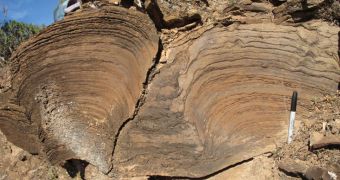A team of investigators may have just discovered the oldest fossils of animal bodies ever found on Earth, a finding that pushes the estimated time when researchers believe animals appeared on the planet to more than 650 million years ago.
The discovery was made in Australia, and the team behind it says that the sponge-like creatures they discovered may contribute to extending the estimates of when complex life appeared on Earth.
The fossils discovered in the Southern Continent are more than 90 million older than the oldest known ones, from any other location around the globe.
Scientists say that they discovered the creature resting underneath a glacial deposit in South Australia, which had been estimated to be about 635 million years old.
“These scientists have found that animals may have appeared on Earth 90 million years earlier than previously known,” says H. Richard Lane.
The expert is based at the National Science Foundation (NSF) Division of Earth Sciences (DES), the organization which funded the new research.
“This is comparable to resetting modern times to begin during the late Cretaceous.” the expert adds.
According to confirmed evidences, the oldest known fossils of hard-bodied animals belong to two reef-dwelling creatures, which lived no less than 550 million years ago.
Other fossils, belonging to soft-bodied animals, are believed to have lived 577 and 542 million years ago, respectively, in the Ediacaran period, but the data is still controversial.
The new investigation was conducted by geoscientists Adam Maloof and Catherine Rose, who are both based at the Princeton University.
They were actually investigating a global ice age event, which evidences show took place around 635 million years ago, at the end of the Cryogenian period.
The group details its discoveries in the August 17 issue of the esteemed scientific journal Nature Geoscience, the NSF reports.
“We were accustomed to finding rocks with embedded mud chips, and at first this is what we thought we were seeing,” Maloof explains.
“But then we noticed these repeated shapes that we were finding everywhere – wishbones, rings, perforated slabs and anvils. We realized we had stumbled upon some sort of organism, and we decided to analyze the fossil,” he adds.
“No one was expecting that we would find animals that lived before the ice age, and since animals probably did not evolve twice, we are suddenly confronted with the question of how a relative of these reef-dwelling animals survived the ‘snowball Earth',” the expert concludes.

 14 DAY TRIAL //
14 DAY TRIAL //